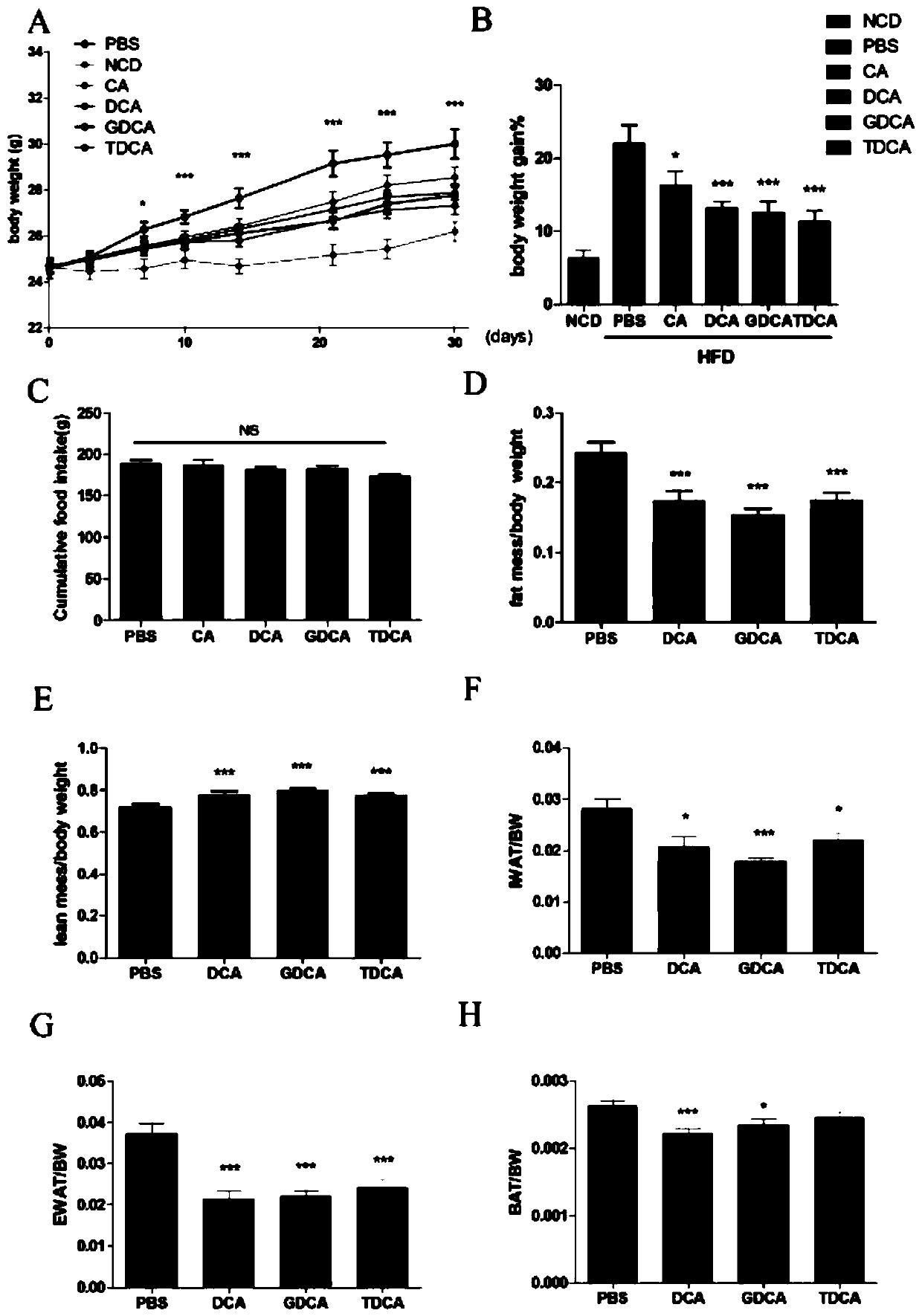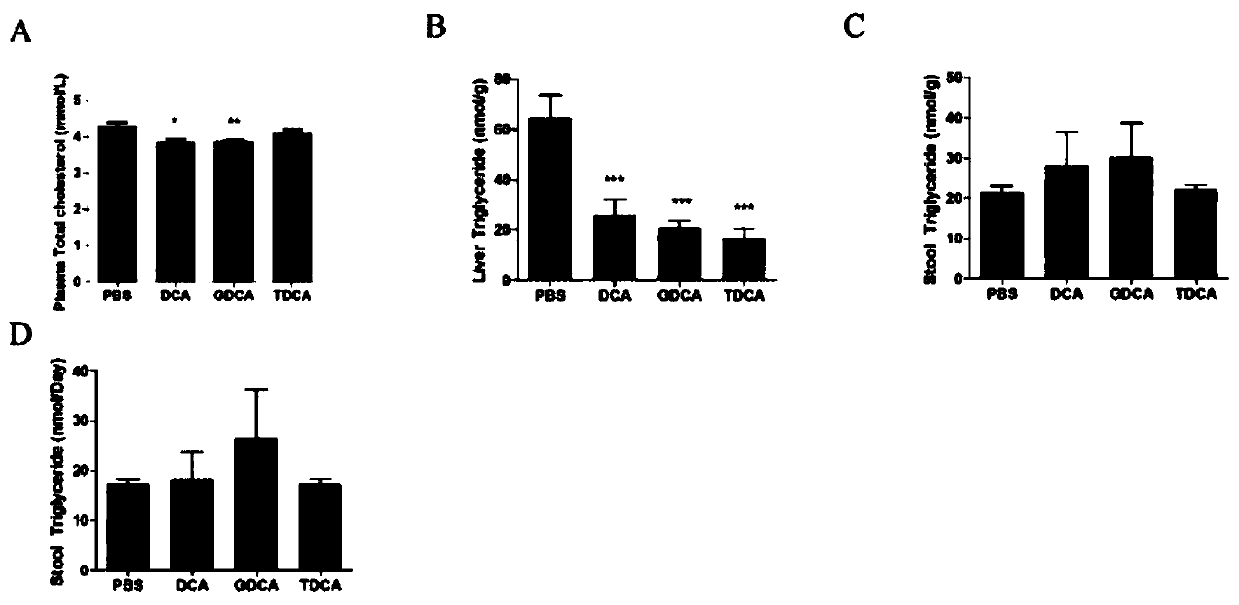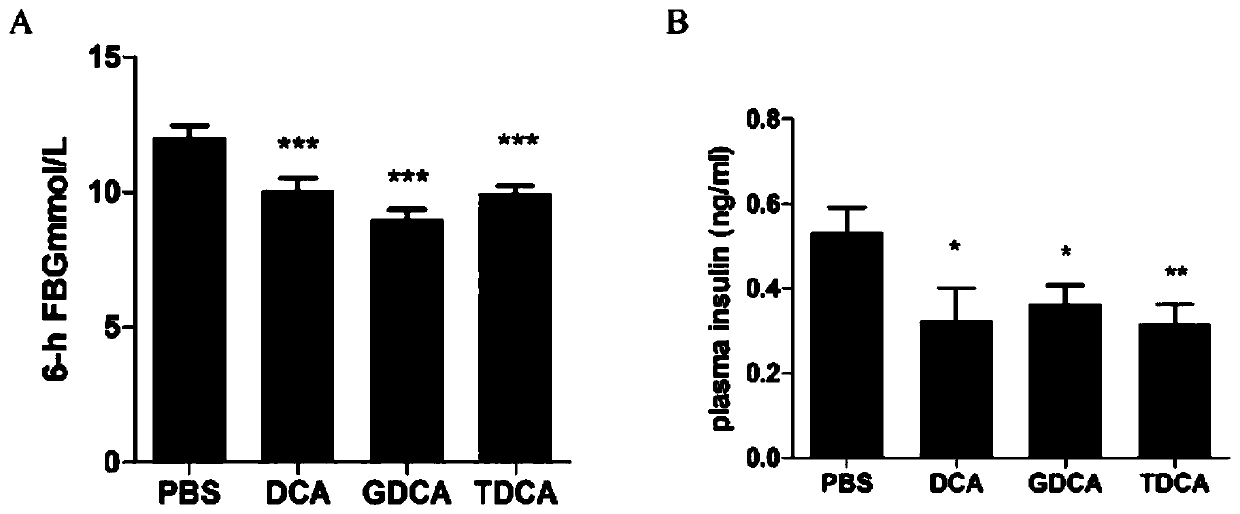Application of bile acid to preparation of metabolic disease drug
A technology for metabolic diseases and bile acids, which is applied in the application field of bile acids in the preparation of drugs for metabolic diseases, can solve the problems that the functions and mechanisms of bile acid components in regulating obesity and metabolism are poorly understood, etc. Effects of lipid metabolism, reducing obesity, and regulating intestinal flora
- Summary
- Abstract
- Description
- Claims
- Application Information
AI Technical Summary
Problems solved by technology
Method used
Image
Examples
Embodiment 1
[0018] 1. Animal Handling
[0019] 8-week-old, SPF-grade male C57BL / 6J mice were purchased from Beijing Lingchang Experimental Animal Co., Ltd., and were raised in SPF-grade IVC independent ventilation cages, 3 mice / cage, with a circadian rhythm of 12h-12h (7:00-19 :00 light, 19:00-7:00 dark); adequate food and water, free access to food. Mouse diet: standard commercial mouse common feed, containing 4.5% fat; 4% cellulose; 21% protein, 1.404kal / g. High fat feed (Research Diet), containing 60% fat, 20% carbohydrate, 20% protein, 5.243kcal / g. Feeds containing bile acids (DCA, GDCA and TDCA): respectively blended with high-fat feed at 0.5% by weight, and the control group was blended with PBS. After the mice were bred for 1 week to adapt to the environment, the experimental treatment was carried out. The entire animal experimental operation lasted for 4 weeks, and the body weight was weighed twice a week. After the experiment, the mouse feces were collected and immediately put ...
PUM
 Login to View More
Login to View More Abstract
Description
Claims
Application Information
 Login to View More
Login to View More - R&D
- Intellectual Property
- Life Sciences
- Materials
- Tech Scout
- Unparalleled Data Quality
- Higher Quality Content
- 60% Fewer Hallucinations
Browse by: Latest US Patents, China's latest patents, Technical Efficacy Thesaurus, Application Domain, Technology Topic, Popular Technical Reports.
© 2025 PatSnap. All rights reserved.Legal|Privacy policy|Modern Slavery Act Transparency Statement|Sitemap|About US| Contact US: help@patsnap.com



